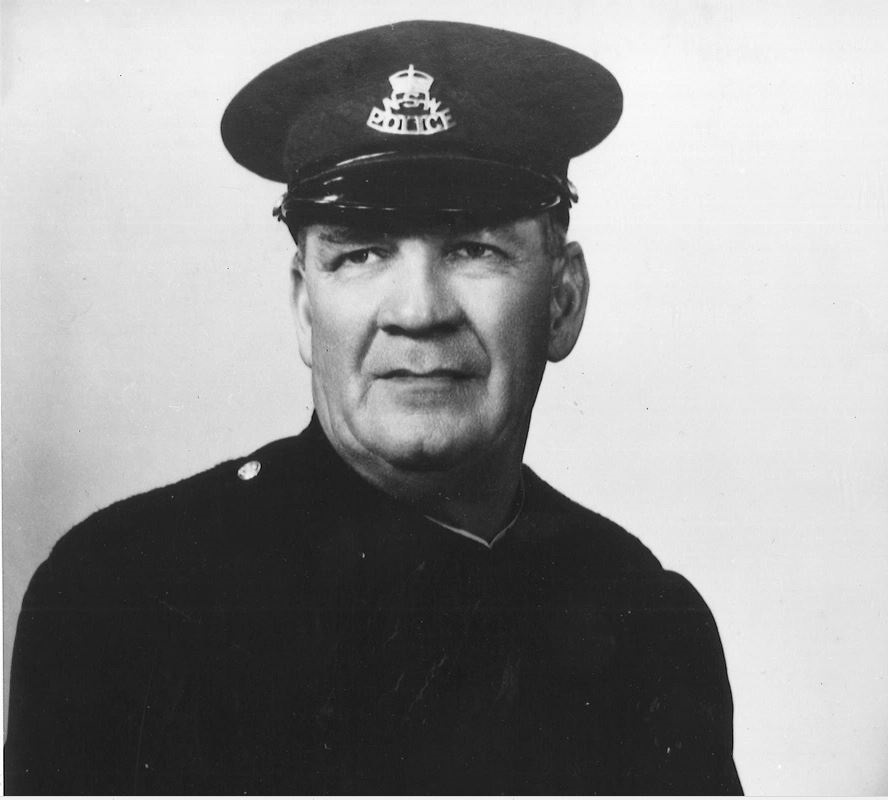
In Cessnock there has been no more legendary crime and policing figure than James William Booth, known to all as Billy Booth.
Born in Leichhardt in 1887 Billy spent most of his career as a police officer in Cessnock. He joined the NSW Police Force as a Probationary Constable in 1911 and by the end of the year was stationed here.
Two years later he married Hilda Adeline Turnbull and they had two daughters. It appears to have been a long and happy marriage, with the family settled at 13 Dudley Street, Cessnock.
Billy Booth was known to be tough, a so-called ‘old school cop’, but he was always fair. Even when he had to attend miners’ strikes and rallies in his official police capacity he kept the miners’ respect. Bill described the miners as: “Good people to live amongst, [I] admire their courage in times of danger and stress, their kindness and generosity to those in need”.
He was scrupulously honest and despised police officers who took bribes or kickbacks. During his career this caused a lot of trouble between himself and corrupt police.
Billy was known for his unorthodox policing methods, including bailing up wayward youths to give them a talking to and maybe a slap or two. Many a troublesome child was warned by their parents to behave or “Billy Booth will get ya!” In this way he became a local celebrity - everyone knew Billy Booth. At his retirement he was described as being so well-known he was “part of the landscape” of the city.
In the 1930s he even had a local greyhound named after him, ‘Billy Booth’. True to its namesake ‘Billy Booth’ (the dog) was a standout, winning many races locally and in Sydney and being known as ‘the Cessnock champion’.
Apart from short stints at East Maitland and Carrington Billy Booth spent his entire career stationed at Cessnock. On his retirement in 1947, as a First-class Sergeant, he held the police record for the longest continuous service at one station. After retirement the Booths continued to live at the family home in Dudley Street for the rest of their lives. Hilda Booth died in 1962 and Billy less than a year later.
In Cessnock there has been no more legendary crime and policing figure than James William Booth, known to all as Billy Booth.
Born in Leichhardt in 1887 Billy spent most of his career as a police officer in Cessnock. He joined the NSW Police Force as a Probationary Constable in 1911 and by the end of the year was stationed here.
Two years later he married Hilda Adeline Turnbull and they had two daughters. It appears to have been a long and happy marriage, with the family settled at 13 Dudley Street, Cessnock.
Billy Booth was known to be tough, a so-called ‘old school cop’, but he was always fair. Even when he had to attend miners’ strikes and rallies in his official police capacity he kept the miners’ respect. Bill described the miners as: “Good people to live amongst, [I] admire their courage in times of danger and stress, their kindness and generosity to those in need”.
He was scrupulously honest and despised police officers who took bribes or kickbacks. During his career this caused a lot of trouble between himself and corrupt police.
Billy was known for his unorthodox policing methods, including bailing up wayward youths to give them a talking to and maybe a slap or two. Many a troublesome child was warned by their parents to behave or “Billy Booth will get ya!” In this way he became a local celebrity - everyone knew Billy Booth. At his retirement he was described as being so well-known he was “part of the landscape” of the city.
In the 1930s he even had a local greyhound named after him, ‘Billy Booth’. True to its namesake ‘Billy Booth’ (the dog) was a standout, winning many races locally and in Sydney and being known as ‘the Cessnock champion’.
Apart from short stints at East Maitland and Carrington Billy Booth spent his entire career stationed at Cessnock. On his retirement in 1947, as a First-class Sergeant, he held the police record for the longest continuous service at one station. After retirement the Booths continued to live at the family home in Dudley Street for the rest of their lives. Hilda Booth died in 1962 and Billy less than a year later.